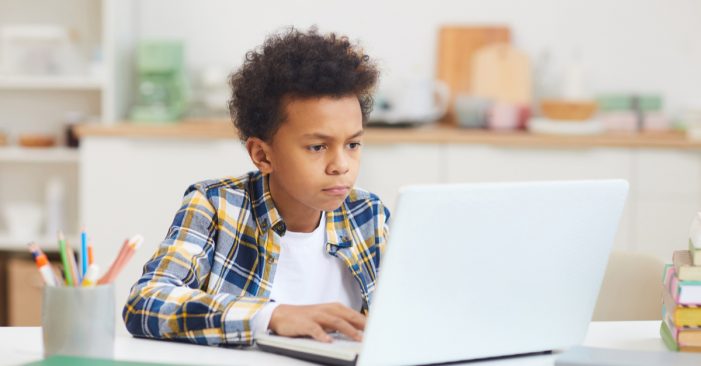By Linda N
As the 2019/2020 school year draws to a close, and summer break is just around the corner. Public schools in New York City will be joining their counterparts to end the school year by June. To many, describing the session as challenging would be an understatement, as educators’, administrators, students, and other stakeholders struggled with overcoming a lethal combination of managing the outbreak of a virus (COVID-19) and concluding the curriculum for the school year. Within weeks, 1.1 million students and over 75,000 teachers under the care of the New York Department of Education (NYDOE) abruptly transitioned from physically attending school to remote learning.
This feat required an unimaginable amount of work consisting of logistics, financial, strategic, and psychological agility. All of these were to avoid the raging virus and its destruction. In response, the agency decided to switch to remote learning, to mitigate the grave consequences experienced by other countries that served as forerunners in managing the pandemic. Tom Liam Lynch, Director of Education Policy at the Center for NYC Affairs at the New School, described this remote learning as a “triage.” He said, ” What is being experienced as remote learning is a triage’, an emergency response.” A description based on the premise that NYDOE was ill-prepared for this mode of learning but had to adopt the option in light of the prevailing circumstances. In an ideal situation, remote online learning involves a well-ordered process, It uploads resources, set up, and launches ahead of time, using the appropriate equipment, such as laptops, tablets, available and prepared to work. Before the ‘Coronavirus-driven-remote-teaching’ strategy, few schools in New York City had engaged in the intensive use of technology for tutoring, especially in the k-5 elementary grade levels. Thus, the use of the Google classroom, class tag, kami between students, and their family was the reality of a few. Amongst the educators, the use of video chatting platforms like facetime, blue jeans, google meet, and others, to deliver lessons, practiced by only a few teachers and proved to be a radically new approach to teaching for quite a number of them.
So, what has the experience of remote learning?
As an emergency measure, the switch to remote learning was the most effective for health and safety reasons. It has also proved useful, especially among some students; however, it gradually became a source of concern and counter-productive for others. In a webinar hosted by Alberto Minujin, Executive Director, Equity for Children, participants from ATD Fourth World group of activists shared experiences of how the remote learning method is impacting their wards. It is common knowledge that caregivers and guardians became ad-hoc teachers and tutors. The phrase ‘really-stressed’ became a common lingo among these groups going by responses across social media platforms since the online home tutoring commenced. However, the combination of untrained and stressed ad-hoc teachers with special needs students is worrisome. Most advocates who spoke on behalf of mothers and grandmothers from the group shared their emotions, worries, and concerns. According to them, students with special needs need a different approach, including face-to-face stimulation, delivered by professionally trained teachers. The latter has mastered the act of supporting them in acquiring educational skills. In the words of one participant, “You can’t replace a teacher. Children need other children to learn”, another participant said, “Parents are not educators, some parents are unprepared, and they are drowning.” For the category of caregivers and guardians, one can infer that remote learning has been more of a set-back than beneficial.
NYDOE’s response and preparedness for summer schools
While the Department of Education has been quite responsive, more is needed. In the discussion, Adrienne Austin, Acting Deputy Chancellor for Community Empowerment, Partnerships and Communication, NYDOE mentioned the various actions the agency took in dealing with the situation by “supporting families with over 300,000 digital electronic devices with internet and serving 500,000 weekly pick-up meals.” Other actions taken include the provision of teaching guidelines, training teachers, allowing a jurisdiction driven execution of the remote learning curriculum. Another strategy is to enable school leaders to take ownership and deliver the mandate using an approach that best suits their community. As the summer approaches, the agency has created summer schooling opportunities that will enable children to stay connected even in deprived neighborhoods.
Previous research shows that most students lose about two months of learning due to the summer holidays. The summer break of 2020 is one with a difference as it comes with the tag ‘ post-COVID-19 summer holidays’. Although this idea poses a unique challenge, NYDOE appears to have a plan. According to Adrienne Austin, they have been working towards eliminating the educational gap as best as possible. There is an ongoing plan to have summer schools happen remotely, with this idea serving about 177,000 children.
How remote learning widens inequality and poverty
Despite all these plans and actions, there is evidence that the impact of online learning varies. In one category, it works well with a group of students – those with established educational skills, from the middle to high socioeconomic background, and have access to additional support that complements their online learning. On the other hand, students from a poor and low socioeconomic background, homeless or live in a shelter, with language difficulty, performing behind grade level, among other challenges, lose out. This category of students contends with this reality. In addition to dealing with remote learning with the technological challenges, the absence of a conducive environment for learning, inadequate supervision, on top of their existing circumstances, widens the already existing gap created by poverty. The described scenario is the reality of New York City public schools, composed of students from various socioeconomic classes. With such demographics and circumstances, a one-size-fits-all approach will result in a disaster, especially among students who are struggling and are performing at lower grade levels.
What needs to be in place to allow all children to thrive at school next year?
Arguably, poverty has been an existing trauma that most students live with every day. While remote learning might have worked for some students from the 1.1 million students in New York, the decision appeared rushed, and there are students who this method has been less effective. For students whose parents can afford the additional support, they need excelling in such circumstances. Most students do not have access to other programs, tutoring, technology, and home environment will be unable to shine as the fall resumption draws near for a new school session and reconsiders in the light of the varying circumstances across classes, grade levels, and needs.
The city’s Department of Education must explore a new distance learning model that recognizes the quiet voices of unheard students and addresses their issues to ensure social justice. The longer the delay, the more the inequality will widen in the future. There must be a reconsideration of some students’ needs separated from the need of the general population. Going forward, they must use a more strategically inclusive approach, involving various stakeholders as already planned.

